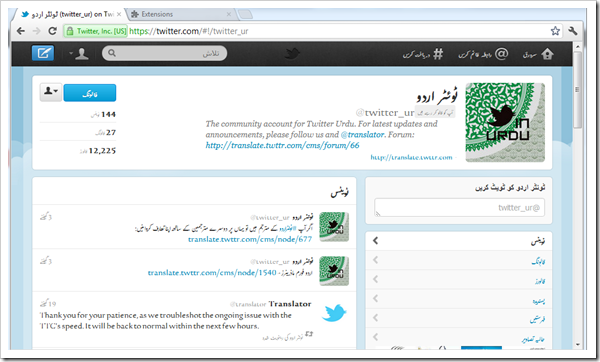Last night, I read about the new Nasteeq font available in Windows 8 and I just had to check it out. After leaving my machine up all night to install the consumer preview, I finally had time to examine the new “Urdu Typeset” out a while ago. Although Microsoft explicitly states it to be a ‘document’ font, it never hurts to check out how it behaves in a web UI setting. Here’s a screen shot of how the Twitter Urdu page would look with the font. I had to do some CSS overriding to get that right (body.ur for the curious).
Urdu Typesetting ![]()
While it does not look that bad, what bugs me is the fact that the English characters in the font are no way near good enough. The extra kerning for Urdu is probably to blame, but as it turns out, I haven’t been able to find a single Nastaleeq font which can render English as well as Urdu characters in such a way that they are legible enough when used in web pages. The nearest you can get is Alvi Nastaleeq v1.0.0 (screenshot below).
Alvi Nastaleeq v1.0.0 ![]()
But even this font doesn’t quite give an elegant enough look which can be used in professional web pages. Until someone is ambitious enough to tackle this problem, we will probably wont see any useable Urdu+English interfaces. Any solution for us bilinguals will have to handle bidirectional (bidi) text as well. Meanwhile, an alternate is to either detect language and add spans with different fonts, or simply let go your desire to see Urdu Nastaleeq and switch to Helvetica.
Helvetica![]()


